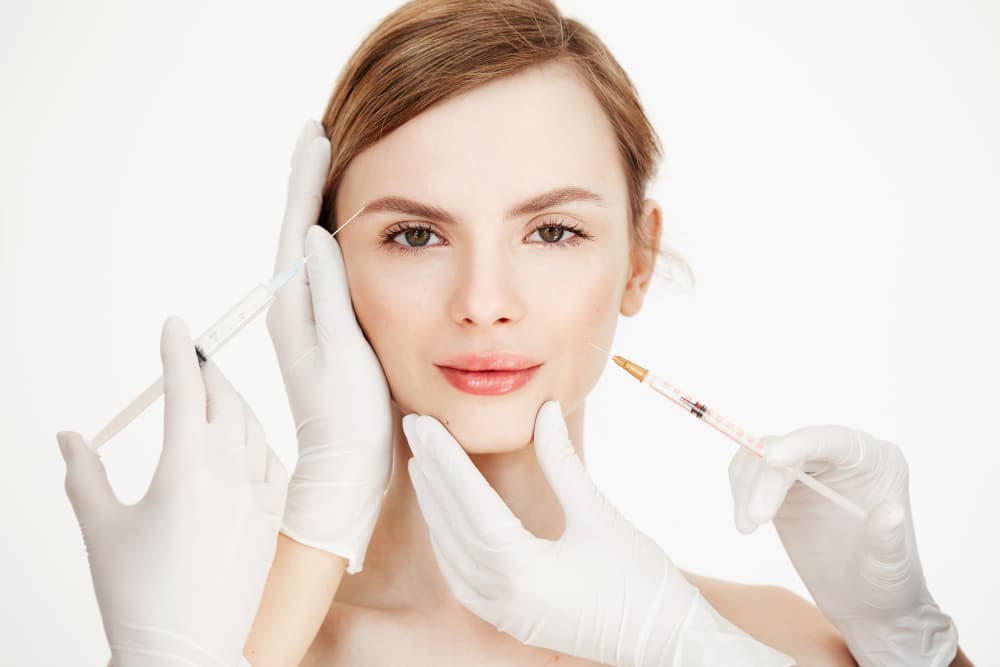
Both Juvederm and Botox are renowned brands in the world of aesthetic treatments, widely used to minimize signs of aging and rejuvenate the skin. Despite their similarities, they differ significantly in many aspects, from their chemical compositions to their applications.
Today, we will compare Juvederm and Botox, exploring what each product involves, their respective benefits, potential side effects, and ultimately help you choose the best filler for your specific needs.
Juvedérm is a popular brand of hyaluronic acid (HA) dermal fillers produced by Allergan. HA, a naturally occurring substance in the skin, helps maintain elasticity and a youthful appearance. As we age, HA production decreases, leading to drier skin and the formation of wrinkles and fine lines. Juvedérm fillers replenish the skin’s HA levels, restoring smoothness and reducing wrinkles.
Juvedérm uses biocompatible materials that blend seamlessly with surrounding tissue and are biodegradable, meaning the body naturally metabolizes the filler over time. This ensures safe integration with the body’s processes, enhancing Juvedérm’s overall safety profile. It is FDA-approved for cosmetic use and is widely recognized as one of the safest dermal fillers available.
Unlike Botox, which targets muscle movements, Juvedérm addresses a broader range of cosmetic facial concerns, including adding volume, plumping lips, and treating under-eye hollows and acne scars. However, since the filler is gradually absorbed by the body, treatments need to be repeated periodically.
Botox, also manufactured by Allergan, is an injectable that uses a different formula and method from Juvedérm. It employs a neurotoxin called onabotulinumtoxinA, which, in small doses, is safe and effective. Administered by trained medical professionals, Botox relaxes muscles in targeted areas, reducing the appearance of wrinkles and preventing new ones from forming.
While primarily used for cosmetic purposes, Botox also treats medical conditions such as overactive bladder, eyelid spasms, crossed eyes, excessive sweating, and chronic migraines. Unlike dermal fillers, Botox does not add volume but smooths out wrinkles by relaxing the underlying muscles.
Juvedérm is a preferred choice for non-surgical aesthetic treatments due to several key advantages:
While side effects are rare, potential risks include:
Serious side effects, such as infection, allergic reactions, numbness, scarring, blurred vision, or blindness, are extremely rare but require immediate medical attention.
Botox offers unique benefits:
Although generally safe, Botox may cause side effects such as:
Rarely, Botox can spread beyond the injection site, causing serious health issues like vision problems, breathing difficulties, allergic reactions, muscle weakness, difficulty speaking or swallowing, and loss of bladder control. Immediate medical assistance is required if these symptoms occur.
Patient suitability varies based on individual needs:
Juvedérm and Botox are distinct treatments with unique applications. Juvedérm excels in restoring volume and enhancing facial features, while Botox effectively reduces dynamic wrinkles. Often, both treatments are used together for comprehensive rejuvenation. A thorough consultation with a qualified healthcare professional will determine the most suitable approach based on individual goals and concerns.
Join our newsletter to receive latest news and offers

Medicle MD Ltd
Reg. Number: 14317237
Address: 27 Old Gloucester Street,
WC1N 3AX London,
United Kingdom
Our website is intended solely for people who use medical devices, such as dermal fillers, as professionals. It may contain product advertisements targeted only at such people. To enter Nu Derma Supply, please confirm that you are such a person (e.g. a medical professional, cosmetologist, service technician, etc.).